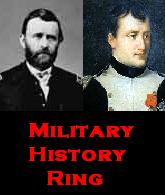 Gabriele Esposito, Armies of the War of the Triple Alliance, 1864-70: Paraguay, Brazil, Uruguay & Argentina (Oxford: Osprey Publishing Ltd., 2015). Maps, Illustrations, Photographs, Index. 48pp. $17.95.
Gabriele Esposito, Armies of the War of the Triple Alliance, 1864-70: Paraguay, Brazil, Uruguay & Argentina (Oxford: Osprey Publishing Ltd., 2015). Maps, Illustrations, Photographs, Index. 48pp. $17.95.
This book provides a succinct overview of one of the bloodiest conflicts in South American history, a war that devastated the population of Paraguay. Gabriele Esposito did an outstanding job of illustrating the significance of the War of the Triple Alliance to military history in Latin America. Esposito’s text on the various phases and forces of the war was aided by illustrator Giuseppe Rava, who provided the artistic talent to the work. Part of Osprey Publishing’s Men at Arms series, this work represents an important contribution to Latin American history for those interested in a brief overview of this historical event.
Esposito examined all aspects of the conflict, including its background. He noted its unusual origins, as Paraguayan dictator Francisco Solano Lopez sought to cement his place as the Napoleon of Latin America and conquer neighboring territory to allow his landlocked nation access to the Atlantic. Having served as commander of the Paraguayan army for the previous twenty years, Lopez’s ambition caused him to lead his nation into a disastrous conflict.
After brief overviews of the major campaigns and battles of the war, the work then turns to the specifics of the opposing forces, including equipment, leadership, and organization. The text was aided by rich drawings, period photographs, and beautiful artwork that demonstrated the overwhelming influence of the French military tradition that was prevalent in the Western Hemisphere armies, as evidenced by the similarities between the uniforms of Paraguay and Triple Alliance (Brazil, Uruguay, and Argentina), and those of the Union and Confederate armies. While the war began as the American Civil War was concluding, the descriptions provided of the arms and uniforms used by the belligerents indicate significant contributions from European powers, especially Britain, as well as the United States. Esposito noted that the Argentinian Army used sky blue cloth exported by the US for its trousers, similar to what Union troops used, as well as Uruguay’s use of the 1853 Enfield rifle musket, which was used by both Union and Confederate forces (40, 42).
One thing that is important to note with this conflict is the profound influence of other modern wars that occurred approximately at the same time, including the Crimean War, Austro-Prussian War, and the Civil War, on the War of the Triple Alliance. Esposito stressed the important distinctions of this conflict, being the first modern war in South American military history, utilizing telegraph communications, weaponry, use of railroads, and balloon observation (4). This war was a bloody affair, with the population of Paraguay suffering immensely. Esposito noted that the country lost between 65-70 percent of its population as a result of the war, taking decades to recover (3). Paraguay fought a long and bloody guerrilla war until 1876 and Brazil and Argentina annexed roughly half of the nation’s territory. Not only was Paraguay utterly humiliated, it suffered a demographic shock, as less than 30,00o of the 160,000 Paraguayans left alive after the war were male, with the ratio of females to males averaging 4 to 1, with some particularly devastated areas having a ratio of 20 to 1 (22). The people of Paraguay suffered because its foolhardy dictator, with a Napoleonic complex, led it into a war it was unprepared for, a war that claimed his own life.
Esposito’s brief study of this war is a wonderful examination of a major conflict that had profound consequences for the development of South America, but has largely faded from the larger historical memory of the world. Through outstanding research and great artwork, the various forces that fought for control over the Platine region of South America appear as a mix of professionally-trained soldiers and untrained militia, thrust into a major conflagration that proved bloodier (in proportion) that the larger American Civil War. Osprey did an outstanding job of providing information on the men who fought in the War of the Triple Alliance and this is a fine contribution to the larger Men at Arms series that will prove useful to those seeking general knowledge on the war, as well as those who may be interested in wargaming the conflict in miniature and want to know how to paint the forces.
If you have a passing interest in Latin American military history, Armies of the War of the Triple Alliance should be on your list of books to read and acquire, as it will provide a great introduction and lead you towards further reading and exploration on this pivotal conflict.















